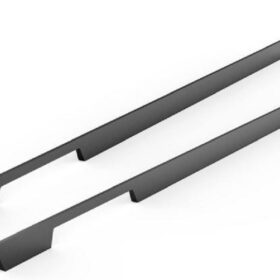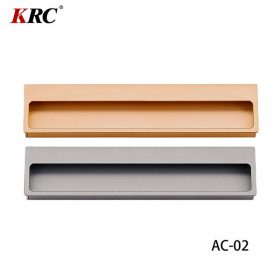Safety Standards and Regulations for Kitchen Bar Handles
Safety Standards and Regulations for Kitchen Bar Handles: A Comprehensive Guide
Kitchen bar handles are an essential part of any kitchen, providing functionality and aesthetics. However, it is crucial to ensure that they meet safety standards and regulations to prevent accidents and injuries. This article will delve into the comprehensive safety requirements for kitchen bar handles, ensuring the well-being of individuals in the kitchen space.
Material and Construction
Kitchen bar handles must be made from durable materials that can withstand regular use and exposure to moisture and heat. Stainless steel, aluminum, and zinc are commonly used for their strength, corrosion resistance, and easy maintenance. The construction of the handles should be sturdy, with no sharp edges or protruding parts that could cause injury.
Ergonomic Design
The design of kitchen bar handles should prioritize ergonomics to minimize strain and discomfort during use. Handles should be contoured to fit comfortably in the hand, reducing the risk of wrist or elbow pain. The size and shape of the handles should be appropriate for the average user, allowing for a secure and controlled grip.
Spacing and Accessibility
Proper spacing and accessibility are essential for kitchen bar handles. They should be placed at a height and distance that allows users to reach them comfortably without straining. The handles should also be easy to grasp and manipulate, even for individuals with limited mobility or dexterity. Adequate clearance around the handles prevents accidental bumps or injuries.
Installation and Maintenance
Meticulous installation is vital for the safety of kitchen bar handles. They should be securely fastened to the cabinets or drawers using appropriate hardware. Overtightening or loose fittings can compromise their integrity and pose a hazard. Regular maintenance, including cleaning and tightening screws, ensures that the handles remain in optimal condition and prevent accidents.
Safety Certification and Compliance
Kitchen bar handles must comply with relevant safety standards and regulations established by international or national bodies. These standards specify requirements for material properties, construction, ergonomics, and installation. Certification from reputable organizations, such as the American National Standards Institute (ANSI) or the International Organization for Standardization (ISO), provides assurance that the handles meet the necessary safety criteria.
Conclusion
Safety standards and regulations for kitchen bar handles play a crucial role in safeguarding the well-being of individuals in the kitchen environment. By adhering to these requirements, manufacturers, designers, and homeowners can ensure that kitchen bar handles are not merely functional but also safe and accessible. Understanding and implementing these standards contribute to creating a kitchen space that is both user-friendly and free from potential hazards.
-
2024-09-14Exploring the Different Types of Modern Closet Door Pulls and Their Applications
-
2024-09-14How Cabinet Door Pull Handles Support High-Traffic Areas
-
2024-09-06Cost-Benefit Analysis of Investing in High-Quality Long Wardrobe Door Handles
-
2024-09-04How Flat Cabinet Handles Enhance Modern Interior Design
-
2024-11-29Top Trends in Modern Kitchen Cabinet Pulls for 2024
-
2024-11-28The Ultimate Guide to Modern Kitchen Cabinet Pulls- Materials, Styles, and Tips
-
2024-11-27Elevate Your Kitchen Design with These Must-Have Modern Cabinet Pulls
-
2024-11-26Sleek and Stylish- The Best Modern Kitchen Cabinet Pulls for a Contemporary Look






